Skip to content
Start with the . Ask the executive + any contributors across the company to go through the setup process.Then, check out your to understand how much time you currently spend with customers.Bring it all together with the , which include best practices plus a ghost note drafter for each center.

 The Customer-First Toolkit: How I meet 500+ customers a year as a CEO
The Customer-First Toolkit: How I meet 500+ customers a year as a CEO
The tools, templates, and rituals you need to become a human-first leader.
Everyone has parts of their job that they love and parts that they loathe - the parts that energize you and the parts that drain you. As you grow in your career, you’ll also grow deeper in understanding which activities are doing what.
My tank is refueled by interacting with people. My favorite part of the job of running is the diversity of people with whom I get to interact across all our stakeholders—teammates, their families, clients, partners, investors, and even folks in our community. Yes, I am definitely an “E” in language.
So when I saw a recent Harvard Business Review paper that said the typical CEO spends 6.0% of their time with clients, I was shocked.


In fact, I was so surprised that we asked an intern to look at my calendar and determine what my percentage is (I’ve since built to automatically do the analysis). Turns out for me it was 17%. Here’s a breakdown of how I spend my time (pre-COVID, obviously, given the “Travel” wedge :) ):
I meet roughly 11 clients a week, 45 clients a month, and over 500 client meetings a year; it’s the joy of my job to interact with people. Talking to customers who are happy and have no issues is fun. But my favorite conversations are with clients who see our potential and want us to reach it—and who are compassionate enough to share the constructive input to get there.
Problem: Meeting clients with a busy schedule is challenging.
When executives meet with customers it can have a big impact on closing a sale, bolstering a relationship, or gathering key information. Yet the best opportunities to talk to customers often surface from folks on the front lines — customer success, sales, marketing, etc. Bridging this gap can be quite challenging, especially with an executive’s busy schedule.
So how do I meet with 500 customers a year as a busy CEO?
Solution: Ghost-Notes
I’m convinced that in order to be , you have to deal with customers on a human level. And that means spending as much time with them as you can. But even for me, it takes a process to make it work. Logistically, operationally, emotionally...it doesn’t happen by accident.
Here’s an example. I received this email from one of our account executives:


This is how I followed up with the customer:


Think of a brand or company you really admire. How would you feel if you got a personal email from the CEO of that company? I’m willing to bet you’d open it quickly and would be more likely to respond.
Once it became clear that I was willing to do this, the sales team came clambering. At first, this was over-whelming, but then I decided to embrace it.
I’ve developed a system called “ghost notes” which allows anyone in the company to write an email on my behalf and place it in my drafts email folder before I review and send. This empowers everyone across the company to leverage my influence as a CEO, while simultaneously providing me a stream of introductions to customers (which by now you should know I love).
The customer-first toolkit
This doc gives busy executives an easy way to measure how much time they are spending with customers via a , and a toolkit to improve their score by sourcing customer interactions with .
Over the years, our toolkit for this process has evolved from complex email filtering rules, to a network of docs and spreadsheets. When I met the Coda team and told them about this method, they helped me convert over to a single Coda doc to run this whole process.
We’ve now templated this and am sharing it with you here. If you would like to try this technique and need help implementing it, the Coda team has graciously offered to help. Click this button to get assistance:
We’ve distilled our system into a four-part toolkit to help you become a customer-first executive:
I recently spoke about this toolkit at Coda’s Block Party 2021. You can watch that here 👇
This system has uncovered countless opportunities for me to interact more with customers, and I’m convinced it will do the same for you. I’d love to hear how it goes for you — reach out on with questions, feedback, success stories, or even a screenshot of your client time score (Can you beat my 17% high score? 😉).
Ready to become a human-first leader? your toolkit.
Want to print your doc?
This is not the way.
This is not the way.

Try clicking the ⋯ next to your doc name or using a keyboard shortcut (
CtrlP
) instead.